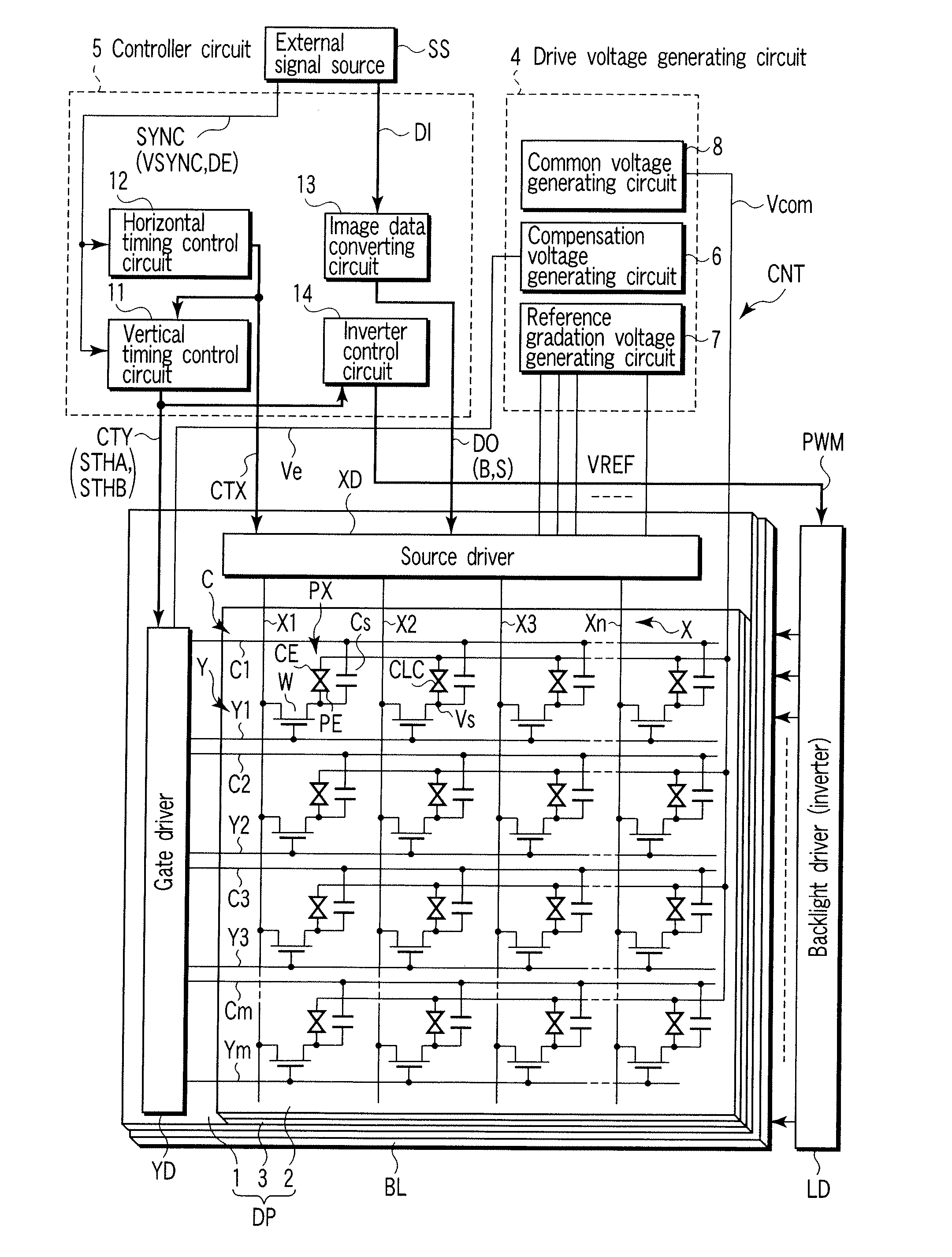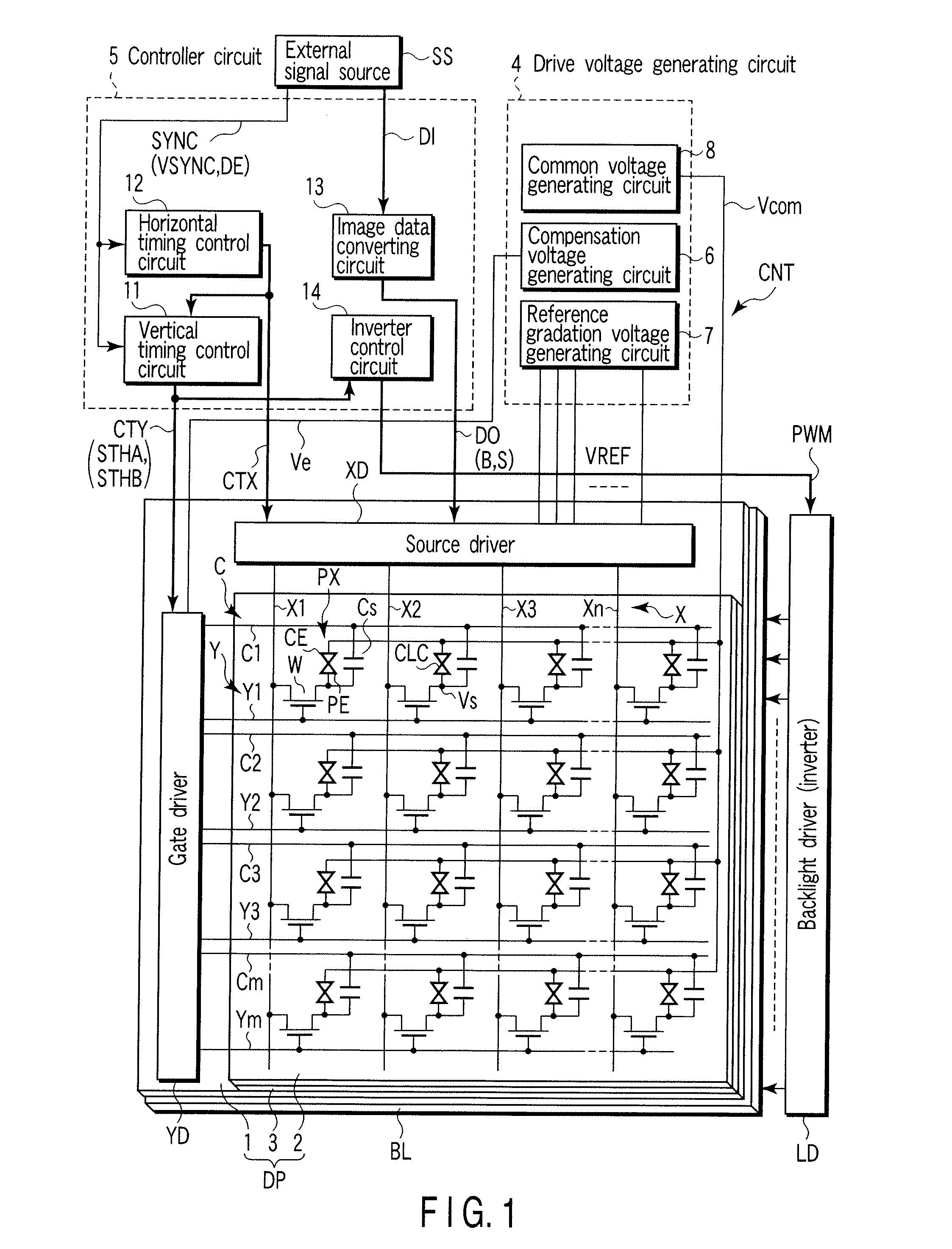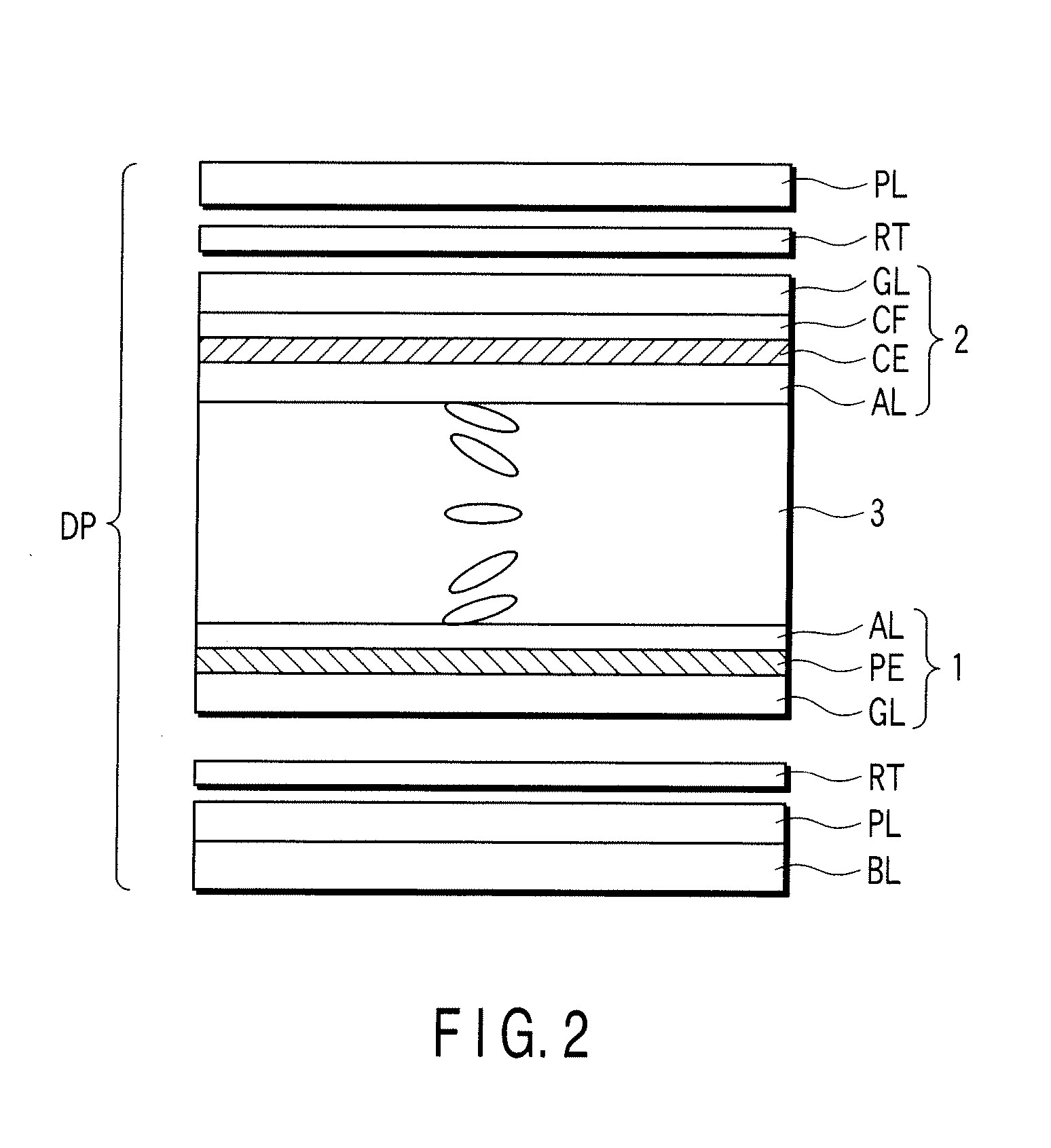Liquid crystal display device and display control method
a display device and liquid crystal technology, applied in static indicating devices, non-linear optics, instruments, etc., can solve the problems of unsatisfactory contrast, backlight consumption, and difficulty in smoothly displaying the motion of objects, so as to prevent a drop in contrast and improve the viewability of moving images.
- Summary
- Abstract
- Description
- Claims
- Application Information
AI Technical Summary
Benefits of technology
Problems solved by technology
Method used
Image
Examples
Embodiment Construction
[0026] There will be described hereinafter a liquid crystal display device in one embodiment of the present invention with reference to the accompanying drawings.
[0027]FIG. 1 schematically shows the circuit configuration of this liquid crystal display device. The liquid crystal display device includes a liquid crystal display panel DP; a backlight BL which illuminates the display panel DP; and a display control circuit CNT which controls the display panel DP and the backlight BL. The liquid crystal display panel DP has a structure in which a liquid crystal layer 3 is held between an array substrate 1 and a counter-substrate 2 as a pair of electrode substrates. The liquid crystal layer 3 includes, as a liquid crystal material, liquid crystal molecules which are transitioned in advance from a splay alignment to a bend alignment for, for example, a normally white display operation, and are prevented from inverse-transition from the bend alignment to the splay alignment by a periodical...
PUM
 Login to View More
Login to View More Abstract
Description
Claims
Application Information
 Login to View More
Login to View More - R&D
- Intellectual Property
- Life Sciences
- Materials
- Tech Scout
- Unparalleled Data Quality
- Higher Quality Content
- 60% Fewer Hallucinations
Browse by: Latest US Patents, China's latest patents, Technical Efficacy Thesaurus, Application Domain, Technology Topic, Popular Technical Reports.
© 2025 PatSnap. All rights reserved.Legal|Privacy policy|Modern Slavery Act Transparency Statement|Sitemap|About US| Contact US: help@patsnap.com



